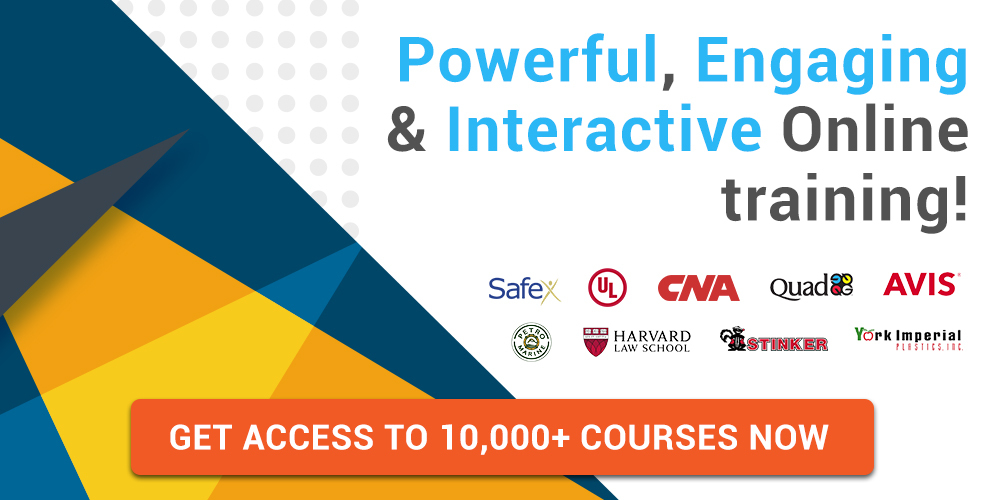Fatigue Management At Work: A Manager’s Guide To Boosting Employee Productivity And Wellbeing
Managing a team is no small feat, and one of the biggest challenges facing managers is helping employees combat fatigue while maintaining optimal performance levels. As the day progresses, managers often notice the mid-afternoon slump beginning to take its toll on their employees or the exhausting effects of an extended workday steadily dragging down their energy and focus.
Fatigue, often brushed off as a minor inconvenience, can actually significantly impact workplace performance and employee well-being. As a manager, it’s crucial to understand and address the root causes of fatigue and implement effective strategies to manage it. Here are 20 ways to help your team with fatigue management and maintain a productive environment.
Save Thousands Of Dollars With Coggno Prime Subscription
How To Manage Fatigue At Work?
Below are 20 Tips for basic fatigue management:
1. Understand The Impact Of Fatigue
The first answer to the question of how to reduce fatigue at work requires certain awareness. Educate yourself and your team about the different types of fatigue—physical, mental, and emotional—and their impact on productivity and wellbeing.
2. Foster A Supportive Workplace Culture
The second way to manage fatigue is to create a supportive and empathetic work environment. In this calm environment, employees feel comfortable discussing their fatigue and seeking support.
Managing Fatigue In The Workplace Course
3. Encourage Open Communication
Encourage open communication about workload, deadlines, and work-related stress to identify potential fatigue triggers and find collaborative solutions.
4. Prioritize Workload And Job Demands
Effective workload and job demands management involves setting realistic expectations, prioritizing tasks, and providing adequate resources and support.
Communication Skills For Managers
5. Implement Flexible Work Schedules
Offer flexible work schedules and remote working options to accommodate different preferences and reduce the impact of irregular working hours on sleep patterns.
6. Provide Ergonomic Workspaces
Design ergonomic workspaces to minimize physical strain and discomfort, encourage employees to take regular breaks, and incorporate stretching exercises to reduce muscle tension.
7. Promote Proper Hydration And Nutrition
Promote proper hydration and provide healthy food options to maintain energy levels and cognitive function throughout the day.
Must Read: Taking The Fatigue Out Of Online Training
8. Encourage Regular Physical Activity
Provide access to on-site fitness facilities, organize group exercise sessions, and promote walking meetings and stretching breaks to encourage regular physical activity.
9. Support Mental Wellbeing
Implement stress reduction programs, offer access to counseling services, and encourage mindfulness and relaxation techniques to support mental wellbeing.
10. Recognize And Reward Efforts
Recognize and reward employees’ efforts and achievements to boost morale, motivation, and job satisfaction and reduce the risk of burnout and fatigue.
Must Read: Recognizing Employees Course
11. Provide Opportunities For Professional Development
Offer training and development programs focused on time management, cognitive behavioral techniques, and fatigue management to equip employees with the skills and knowledge to manage fatigue effectively.
12. Ensure Compliance With Occupational Safety Regulations
Ensure compliance with occupational safety regulations and guidelines related to fatigue management to create a safe and healthy work environment.
13. Monitor And Analyze Workload
Monitor and analyze workload regularly to ensure it is manageable and realistic. Adjust workload and redistribute tasks as needed to prevent burnout and fatigue and maintain employee well-being.
Developing And Rewarding Others Learning Track
14. Implement Advanced Technology And Tools
Leverage advanced technology and tools like wearable devices or productivity apps to monitor fatigue levels, track tasks, manage workload, and optimize work schedules. Utilize data-driven insights to identify areas for improvement and implement targeted interventions.
15. Foster Social Connections
Organizing team-building activities, social events, or networking opportunities can encourage social connections and peer support. Fostering social connections can help reduce feelings of isolation, improve morale, and enhance job satisfaction.
16. Create A Comfortable Work Environment
Ensure the workplace is comfortable, clean, and well-ventilated to promote a healthy and productive work environment for your team. Address any environmental factors contributing to fatigue, such as poor lighting or uncomfortable temperatures.
17. Provide Feedback And Recognition
Provide regular feedback, recognition, and appreciation to employees for their hard work and contributions. Recognizing and rewarding employee achievements can boost morale, motivation, and job satisfaction, reducing the risk of burnout and fatigue.
18. Encourage Open Communication
Encourage open communication and feedback between managers and employees to address any concerns, challenges, or issues related to fatigue management. Create a safe and supportive environment where employees feel comfortable discussing their needs and seeking assistance when needed.
19. Implement Flexible Work Arrangements
Offer flexible work arrangements, such as compressed workweeks, flextime, or telecommuting options, to help employees effectively balance work and personal responsibilities. These arrangements can help reduce stress, improve work-life balance, and enhance overall wellbeing.
20. Lead By Example
As a manager, lead by example by prioritizing your own wellbeing, managing your workload effectively, and demonstrating healthy work habits. Your behavior and actions set the tone for the workplace culture and influence employee behavior and attitudes toward fatigue management.
Bottom Line
A multifaceted approach, addressing physical and emotional needs, is necessary to manage fatigue. As the manager, you are invaluable in creating a safe work environment that encourages success and growth amongst employees. Implementing these 20 effective strategies for managing fatigue at work can improve the wellbeing of employees, increase productivity, and contribute to the overall success of your organization.
Get quality training from Coggno, an online training platform for modern workplaces, to support your initiatives in managing fatigue effectively.
Maximize Training, Minimize Costs With Coggno Prime




















